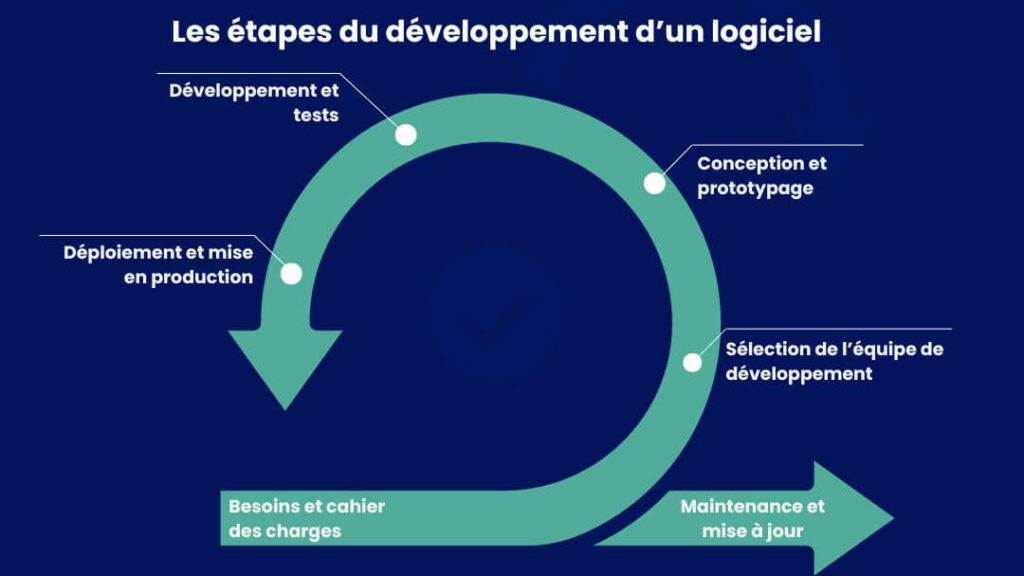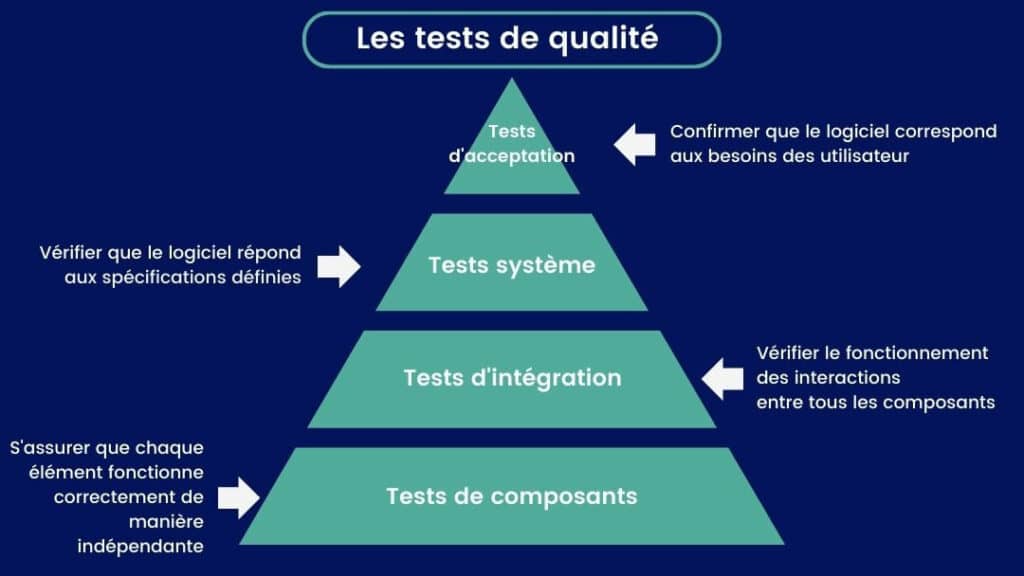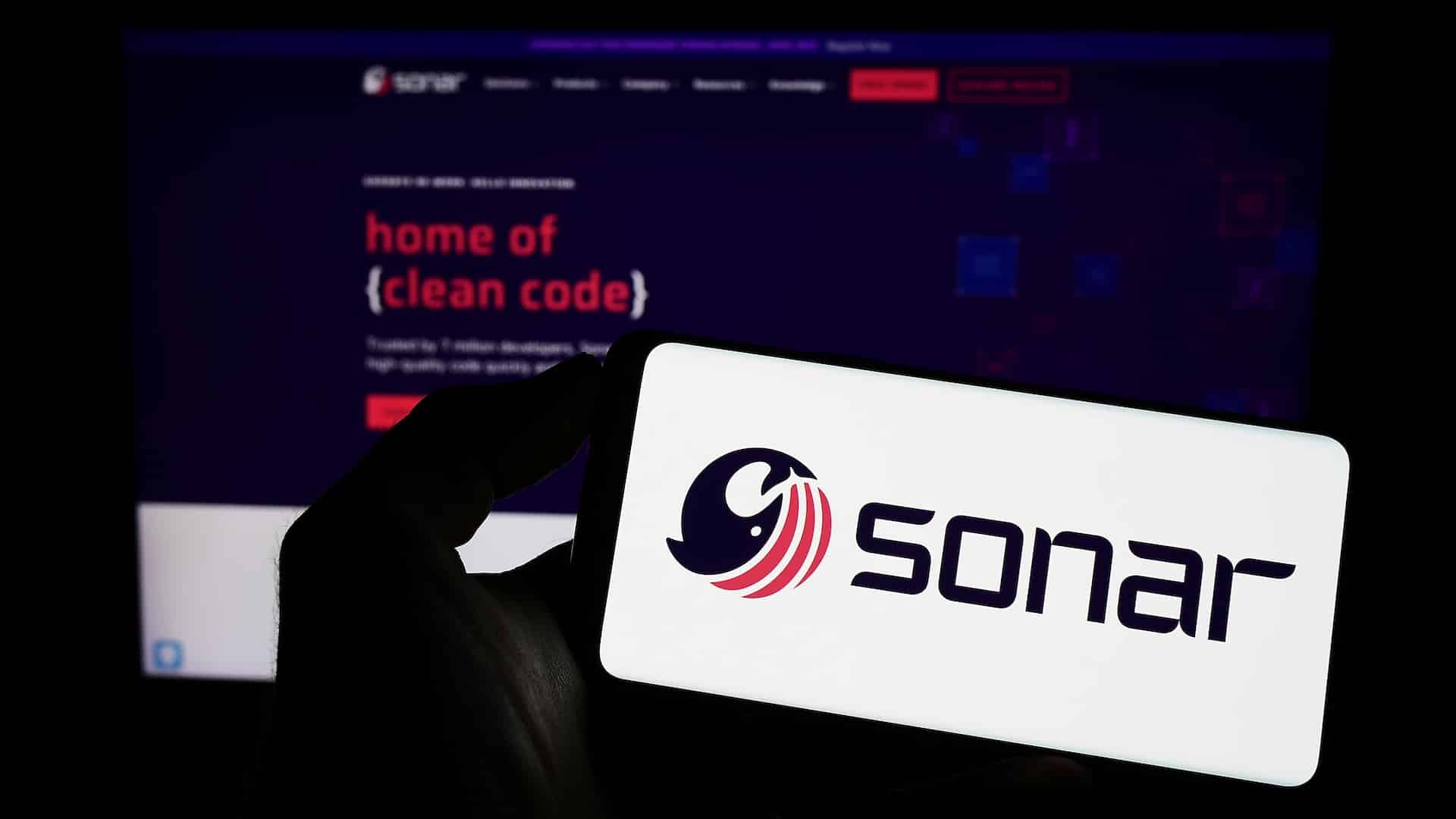Discover how to create custom software in 6 steps: from defining requirements to maintenance. Realise your technological vision!
Every business seeks to optimise its efficiency, innovation, and competitiveness. But not all businesses and organisations are designed the same way, nor do they operate on the same principles. How can you ensure that the technology tools at your disposal precisely meet your needs?
The answer often lies in choosing custom software. Rather than adapting your processes to generic solutions, it’s the tools that adapt to your needs. This is the daily routine of the Custom Software Development department at the Qim info Centre of Expertise: assisting you in the development of your custom software. In a specific interview, I explain in detail the role of our department.
What is custom software development?
Like ready-to-wear, custom software is developed especially for an organisation.
Difference between standard software and custom software
Custom software development involves designing and creating software specifically tailored to the needs and requirements of a given organisation or population.
Standard software is a product already developed, sold to many customers. It has generic functionalities intended to meet the common needs of a majority of users. If it has customisation criteria, these are necessarily limited to minor functionalities.
The advantages of a customised solution
Adopting a customised solution offers significant advantages compared to a standard solution:
- Perfect alignment with your needs
- Flexibility to modify and adjust the software according to the evolution of needs
- Simplified integration with other tools already used within the company.
In the long run, your business gains in efficiency and can more easily distinguish itself from the competition.
The challenges and constraints to anticipate
If a custom solution interests you, there are nevertheless constraints to consider:
- Higher initial costs. Let’s clarify this point, as we are indeed referring to initial costs, not overall cost: it is possible that standard software ends up being more expensive in the long run, between functionalities you pay for but do not use, or on the contrary additional functionalities you end up buying upon realising that the basic software is not sufficient to meet your needs. This is added to the advantage of cost control. Opting for custom development allows you to decide if you wish to continue investments based on your real needs, without being at the mercy of a possible change in licensing policies that could lead to unforeseen additional costs.
- Implementation time
- A potential dependency on the developer for future modifications. This is a crucial point for Qim info: we believe it’s important for our clients to have the choice between entrusting us with the maintenance of their software or benefiting from solid training to become autonomous.
Why opt for custom software?
With so many standardised solutions available, what is the added value of custom software?
Specific functionalities not found in standard solutions

Some organisations have such particular processes or needs that no standard software available on the market can adequately meet them.
A competitive advantage in the market

By owning unique software, companies can stand out from their competitors, offer a better customer experience, and optimise their internal operations.
Evolution and long-term adaptability

With custom software, companies are not constrained by the limitations of a standard solution. They can ensure that their software evolves with them and can adapt to future changes and innovations.
We will now look at each of the major steps in developing software.

Step 1 - Defining requirements and specifications

This first step is fundamental, as it lays the foundation for everything that follows and determines the success of the software project.
Identifying and documenting required functionalities
It is crucial to clearly define the expected functionalities of the software. This involves in-depth discussions with all stakeholders, from end-users to decision-makers. Once identified, these functionalities must be documented precisely to avoid any misunderstanding in the future.
At Qim info, we understand that it is not always easy for our clients to pinpoint their need. This is not a problem, since a Business Analyst is part of our team whose role is to understand precisely your need and expectations.
Determining target users and their needs
Understanding who will use the software is essential to ensure its relevance. This involves defining the different user profiles and identifying their specific needs, behaviours, and expectations regarding the software.
The importance of a long-term vision
Even if the priority is to meet the immediate need, it is wise to think about how the software could evolve in the future. This long-term perspective helps to design a flexible and scalable solution.
Step 2 - Selecting the development team

Qualified collaborators are indispensable for the proper development of your custom software.
Finding the right partner or hiring internally
Depending on the scope and complexity of the project, you can put together a team internally or call on an external specialised partner. Each of these options has its advantages: an external partner can bring specialised expertise, while an internal team saves time since it already knows the culture and processes of the company.
This is how at Qim info, we work either in delegation mode or in project mode with the teams of the Centre of Expertise.
The importance of experience and specialisation
Experience is a key factor. A team that has already worked on similar projects will be better prepared to anticipate challenges and propose effective solutions. Moreover, some applications require specialised skills.
At Qim info, our department has been in existence for 10 years and more than 50 clients have already trusted us. We offer you a team consisting of developers, a Business Analyst, a UI/UX designer, a tester, and a technical leader.
Communication as the key to success
Regular and transparent communication between the development team and stakeholders is crucial. It ensures that the project stays on track and meets the initially defined needs.
I'm very pleased with Qim info's work, because we didn't give any information about the previous version of the application. Whether it's for the content or the design, the development team was able to make do with the specifications.
Benoît Mermillod-Anselme, chef de projet IT chez les Services Industriels de Genève
Step 3 - Design and prototyping

This step is particularly motivating, as you can see what your software will look like.
Translating needs into mock-ups and functional prototypes
Before actual development, it’s essential to visualise the final product. This involves creating HD/LD mock-ups, wireframes, or prototypes to give a concrete idea of what the software will look like and how it will function.
Validating ideas before full development
Prototyping is the step used to test and validate ideas. It allows for quick feedback from users and stakeholders, which can lead to adjustments before full development. At Qim info, we involve our client as a full-fledged Product Owner, because their feedback is essential for refining the specifications of their software.
Recommended tools and methodologies
The use of modern design and prototyping tools, such as Figma, Sketch, or Adobe XD, can facilitate this process. As for methodologies, approaches like Design Thinking can help to centre the design process on the user.
You can also integrate Domain-Driven Design (DDD) into your development strategy. This approach emphasises the software’s compliance with the complexities and subtleties of the business domain concerned. By prioritising business logic, DDD ensures that if the business evolves, the software solution can be adapted accordingly, allowing parallel evolution of the software and the domain it serves.
Step 4 - Development and testing

Nothing should be left to chance at this stage of development.
Following an agile methodology for frequent feedback
Adopting an agile methodology, such as Scrum or Kanban, allows for iterative development with regular feedback from stakeholders. This ensures that the product is constantly aligned with user needs and offers the flexibility needed to adapt to changes in priorities or new requirements. At Qim info, we are convinced by agility and this approach has been at the heart of our way of working with our clients for now 10 years.
The importance of testing to ensure quality
Testing the software is imperative to ensure its quality and reliability. This ranges from unit tests, which check isolated parts of the code, to integration and acceptance tests that examine the overall operation of the application and its suitability to user needs.

Integrations and compatibility with other systems
In an interconnected technological ecosystem, it’s necessary for the new software to integrate smoothly with other systems or platforms. This may involve the use of APIs, support for different data formats, or compatibility with specific operating systems.
Step 5 - Deployment and production launch

You’re there! Your software is operational, but the work doesn’t stop there.
Preparing the ground for launch
Before the launch, it’s vital to prepare the infrastructure, configure production environments, and ensure everything is ready for the software’s deployment.
For large-scale projects, this phase should also include a structured transition to the operations teams. These teams play a crucial role in the operational management and maintenance of the software. It is therefore imperative to involve them early in the process, inform them of technical specifics, and train them in new procedures to ensure efficient and secure handover.
Training end-users
To ensure successful software adoption, it’s essential to train end-users. This can include training sessions, providing user manuals, or setting up online support. This is therefore an important step, to which we at Qim info pay great attention.

Ensuring a smooth transition
Adopting new software can disrupt daily operations. To minimise disruptions, it’s crucial to ensure a smooth transition, with clear communication and ongoing support during deployment.
You can also consult our article on Clean Code which summarises good practices for producing understandable and intuitive code to handle.
Step 6 - Maintenance and updates

Once your custom software is launched, Qim info offers you hosting and maintenance services, to ensure its security and compliance.
The need for regular monitoring
Even after launch, the software requires continuous attention. This includes monitoring its performance, resolving any bugs, and ensuring security.
Planning updates to stay current
To ensure that the software remains relevant and effective, it’s essential to plan and execute regular updates, incorporating new technologies or responding to new market requirements.
Managing user feedback and adjusting accordingly
Users and their business are at the heart of all software. Their feedback, whether criticisms, suggestions, or requests for improvement, is essential to guide future updates and ensure that the product continues to meet their needs.
Do you have questions about the technologies to use for the development of your custom software? Discover our detailed comparison between the Angular and React frameworks.
In conclusion, we hope this article has enlightened you on the advantages of custom software and its development process. Our entire team from the Custom Software Development department is at your disposal to discuss your need and talk about your project.

Loïc Malot
Head of Custom Software Development at Qim info







